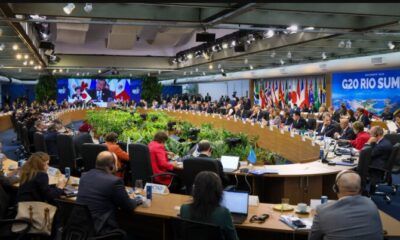Chinese negotiators pushed their American counterparts to remove as many of the existing tariffs as possible, while the Trump administration pressed China to make more purchases of soybeans, poultry and other goods to help relieve the pressure the trade war had put on American farmers. Mr. Trump also wants China to buy more American products to help narrow the trade gap between what the United States sells to China and what it imports.
To ensure that China keeps its commitments, the Trump administration has insisted on quarterly reviews, as well as an agreement that China’s agricultural purchases would not drop below a certain amount. If China violates the terms of the agreement, tariffs that the Trump administration had removed would snap back into place.
China has been willing to discuss purchases of American agriculture, especially since a disease has devastated its swine population and led to spiraling pork prices. But in previous discussions, Chinese negotiators had pushed back against promising set purchase amounts far into the future, saying such an arrangement could anger its trading partners and violate its commitment to the World Trade Organization to treat all members equally.
In recent months, American and Chinese officials have been locked in a contentious discussion of what proportion of American concerns about Chinese economic practices are being addressed in the Phase 1 deal, and whether a corresponding proportion of Mr. Trump’s tariffs should be rolled back. The Chinese had enumerated the American requests into a list of more than 100 items, and have argued that if they resolve half of them, then half of Mr. Trump’s existing tariffs should be removed.
Some American analysts have criticized the approach, saying a significant reduction could leave the United States with less leverage for the second- and third-phase discussions that are planned, in which even more difficult subjects like Chinese subsidies would be included. They also point to the depreciation this year in China’s currency, the renminbi, saying that drop would almost offset the effect of the tariffs.
But others say an across-the-board reduction in the rate of all existing tariffs does offer the Americans some advantages, including not having to pick and choose among industries that would receive tariff relief.
The last tranche of tariffs, scheduled to go into effect at 12:01 a.m. on Sunday, would extend levies to cover nearly every shoe, laptop and toy that the United States imports from China — a total of $539.5 billion of merchandise last year. Companies have been eagerly watching to see whether the administration would issue the official announcement that will stop those levies from going into effect.

 Entertainment1 week ago
Entertainment1 week ago
 Tech4 days ago
Tech4 days ago
 Tech4 days ago
Tech4 days ago
 General News2 days ago
General News2 days ago
 Business News1 day ago
Business News1 day ago
 Jobs1 day ago
Jobs1 day ago
 General News2 days ago
General News2 days ago
 Business News1 day ago
Business News1 day ago

